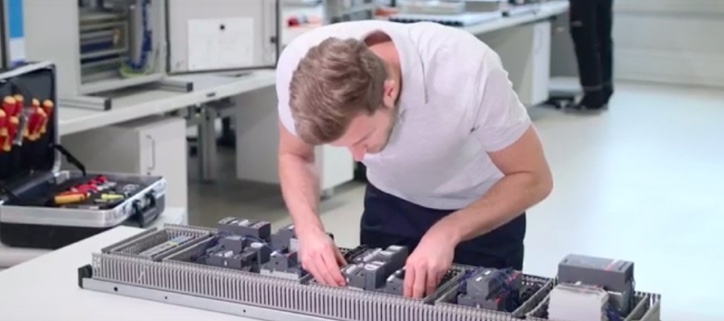Selecting control panel components
Jonathan Doncet
Product Marketing Manager
ABB Electrification Products Division
The latest panel technology often offers big benefits. But depending on the application, the older technology may be better. Here are some factors to consider when selecting control panel components and the applications where traditional NEMA components can be a better choice than newer IEC technology.
Factors to consider when selecting control panel components
“Make new friends, but keep the old. One is silver, the other is gold.” That line from a classic Girl Scout song is not only true for friends. Surprisingly, it is also true in some cases for control-panel technology.
Power-control-component makers turn out a steady stream of new and innovative power-control technology, much of it offering clear improvements compared to traditional technology. But there are a number of instances where the older technology actually offers important benefits over the more-current versions, making it the better option. The right choice comes down to the application.
As one example, today’s IEC contactors are highly versatile, solid-state control components. Rather than being built up from components, they represent a fully integrated, one-piece solution. But in some instances, that design feature can be less advantageous than traditional NEMA contactors.
“With most NEMA contactors, you have the ability to swap out individual components,” explains Jonathan Doncet, ABB product manager. “In challenging applications where the life of panel components is shortened by environmental factors or severe duty cycles, being able to replace individual components rather than the whole device can be faster and less costly.”
The ability to repair and reconfigure NEMA devices in the field is one of their key benefits.
“With some NEMA contactors, you can easily adjust the number of poles, convert them from electrically to mechanically held, or from normally open to normally closed,” says Doncet. “Those changes can be made in the field with few or no tools. In many cases, a similar change with iec technology would require a replacement device.”
Replacing contacts is a perfect example of a situation where neMa components have an advantage. contact welding is a common problem in some applications. With many neMa components, those relatively inexpensive contacts can be swapped out in just minutes with just a screwdriver. While it’s true that the entire iec contactor can also be quickly replaced, that’s a much more costly swap.
“Some of these NEMA components require no tools to replace,” says Doncet. “Coils and contacts, for example, can be quickly and easily replaced, with little downtime, even by someone with only limited control- panel experience or knowledge.”
When it comes to selecting panel components, there are positives related to both the IEC and NEMA options. A significant difference is that IEC components tend to be more application-specific. NEMA components, by comparison, have a more-general-purpose design with a focus on ease of selection. A given NEMA component can typically be used across a wider range of applications.
The fact that they are more application-specific makes identifying the right IEC component a bit more challenging. You’ll need to work a bit harder to figure out what you need for a job. The parameter ranges for NEMA products, on the other hand, are more standardized and have a wider overload margin.Tthe downside is that NEMA products are typically larger than a comparable IEC product. That can be a problem when panel space is tight.
“When you buy an IEC contactor, you select the correct device based on various application parameters such as volts, amps, control voltage, number of poles, etc.,” according to Doncet. “With NEMA components, on the other hand, you select the required component based on expected horsepower & voltage. That NEMA component will be able to operate at all amperages up to and including the design maximum.”
People who are relatively new to working with control panels may know only the iec technology, and are no doubt perfectly happy with it. In most applications, it probably is the right choice. But just because the NEMA technology has been around for 40 years doesn’t mean it is never the better option. In applications where technicians are routinely dispatched to troubleshoot and repair panels, NEMA components can reduce both repair costs and downtime, making the “old friend” the better choice.




